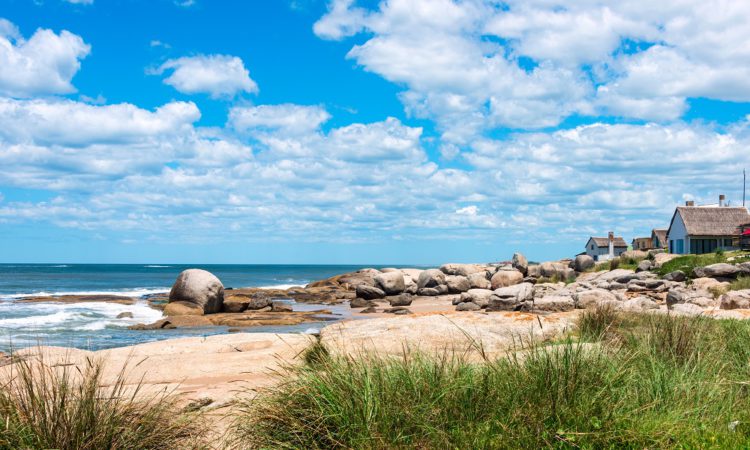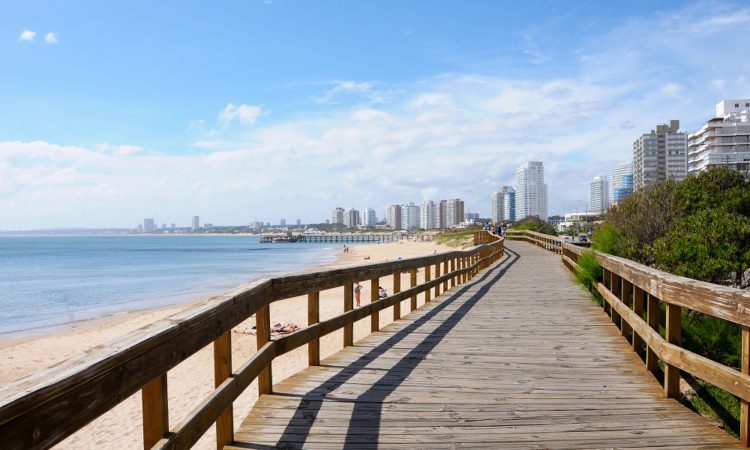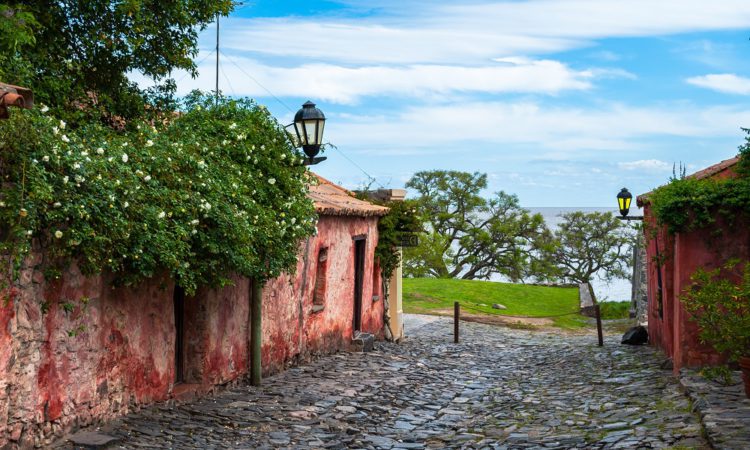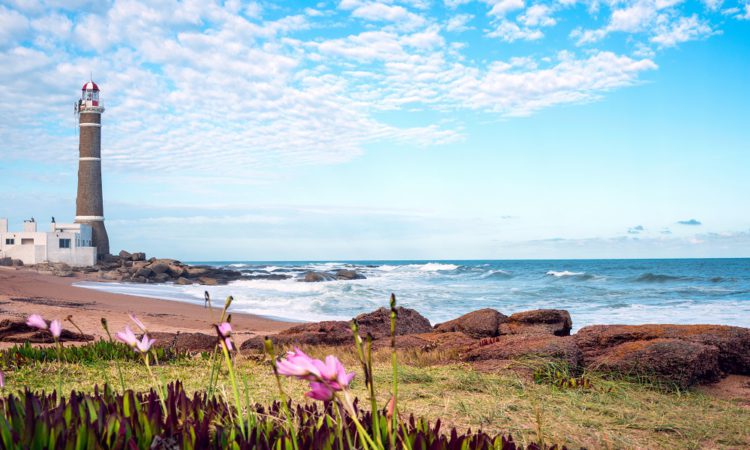Uruguay
Uruguay is emerging from the shadows of its larger neighbours Brazil and Argentina. Uruguay captures some of the best essence of both. This beautiful country is a gold mine of culture and raw natural beauty just waiting to for you. From the cobbled streets of Colonia, to the grand, crumbling buildings of Montevideo, Uruguay holds a special kind of old school charm about it. From the authentic gaucho ranches to the rugged coastline and fashionable resorts there is something for all.
Just a short ferry ride across from Buenos Aires lies the colonial city of Colonia del Sacramento. A world away from the hustle and bustle of the city, this quaint town has a fin de siecle feel. Vintage cars line its cobbled streets, harking back to times gone by. Ramble along tree-lined avenues and the old fort. A place where cafe culture dominates so leave plenty of time to soak up the atmosphere. Well-known for its colourful sunsets, it’s worth the trip for these alone. Join the locals along the promenade to marvel at the spectacular colours lighting up the sky.
For those looking for a slice of luxury, the seaside resort of Punta del Este is a must. As one of South America’s most fashionable holiday destinations, royalty and celebrities alike flock to its chic hotels. You too can enjoy golden sandy beaches, sip champagne and top up your tan. But if you’re looking to get to the heart of Uruguay, getting out of the cities and into ‘el campo’ is a necessity. It’s here that you’ll find Uruguayan life in its truest sense. Throw yourself into the vastness of nature, and you will be captivated by everything this beautiful country has to offer.
Head up the Atlantic coast for empty beaches and get close to nature at Cabo Polonio. This rustic paradise, once hippie colony, now represents the ‘simple life’ at its best. People are drawn here in their own way to a slower pace of life – fisherman, eccentric expats and artisans selling jewellery. This is the kind of place where dolphins swim alongside surfers. No electricity or running water adds to the charm of ‘Cabo’ with fireside conversations marking the end of magical days spent in the sun and surf. Further north are wetlands that are ideal for bird-watching or horse-riding under a big sky. The lagoons make ideal places for kite-surfing.
On the western border, the old meat-packing plant of Frey Bentos was recently declared a World Heritage Site. This ‘Cultural-Industrial’ attraction is a one of a kind. The whole landscape alongside the Uruguay River has been preserved. There are workers canteens and Victorian British-made machines. This is what fed the troops during the Great War.
Uruguay is hardly discovered. It is a great place to hire a car and drive off into the sunset. Take the road less travelled, Route 7 towards Melo; through the heart of cattle-ranching country. Drive through the Cuchilla Grande – a range of soft, curving hills – and past fragrant vineyards and orchards up to the Brazilian border. You’ll have it all to yourself…
Featured members
Tour Operators View all
Cruise Ships
Essentials
| Capital: | Montevideo |
| Size: | 176,215 km² |
| Population: | 3.4m |
| Currency: | Uruguayan Peso |
| Language: | Spanish |
| Visas: | Not required by British nationals |
Recent news View all news >
Good to know

Uruguay produces some of the World’s best beef. As well as asado (a barbecue) in all its forms try puchero (beef with vegetables, bacon, beans and sausages). Other specialities are barbecued pork, grilled chicken in wine, cazuela (or stew) usually with mondongo (tripe) or sea foods (for example squid, shark – cazón, mussels – mejillones). The sausages are very good and spicy (chorizos, morcillas, salchichas). Pastries are very good indeed, and crystallized egg-yolks, known as yemas, are popular sweets.
Mate is a favourite drink between meal hours, drunk with a metal straw from a gourd. The local spirits are caña and grappa. Try the clérico, a tasty mixture of wine, fruit juices and fruits. Uruguay has excellent world class wine, and has its own grape variety Tannat which produces a strong full-bodied red.

Like all South America many Uruguayan Festivals are religious in nature, e.g. Epiphany and Holy Week (Semana Santa), and All Souls Day. Like Brazil the February / March Carnival or Las llamadas is one of the biggest, with costumes, dancing and much drinking especially in Montevideo. The country also enjoys holidays such as New Year’s Day and Labour Day, while Independence Day in August marks the country’s break from Brazil in the early 1800’s. In March is The Festival of the Gaucho Culture in Tacuarembo. There are a number of equestrian activities such as riding competitions and rodeos, dancing and traditional food throughout the festival.

Uruguay has a mild temperate climate. For the beaches the southern summer is best, between December to March when temperatures average around 21°C to 27°C. The Atlantic breezes keep the nights cool. The rains are mostly in July – August. In summer it is best to book transport and accommodation advance, and in winter it is best to check that they are still open.
















